Must-Know Furniture: The Grandfather Clock
http://decor-ideas.org 02/25/2015 03:13 Decor Ideas
What we refer to today as a “grandfather clock” is more accurately called a longcase clock. Created in 1670 by English clockmaker William Clement, the clock was a revolutionary design that sported a pendulum that swung exactly once per second encased inside a free-standing cabinet. Thanks to Clement’s timeless design, the grandfather clock has changed little in appearance in nearly 350 years. But don’t think grandfather clocks are only for olden times. Here’s what you need to know to make a one work in your home.
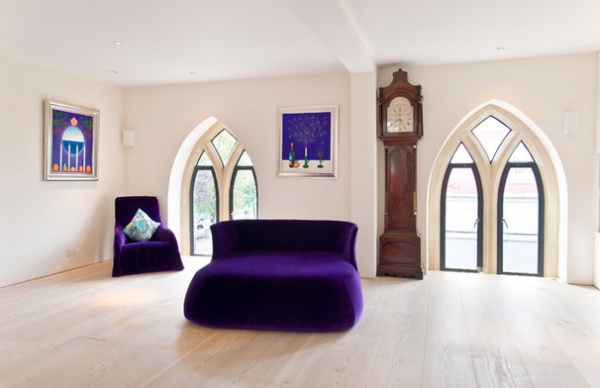
Where to Use a Grandfather Clock
Think carefully about where you want your grandfather clock to go, and decide whether it’s a good spot environmentally. “Wooden clocks are like people in a way,” says dealer Ned Ingberman of The Well Made Clock. “They do best in a room that’s comfortable for everyday living, not too hot or cold, and not too damp or dry. These clocks are susceptible to extreme fluctuations in humidity and temperature. And just like other fine pieces of furniture, the fluctuations can cause the wood to swell and shrink.”
So, placing a grandfather clock right by an entry door that doesn’t have a vestibule to temper the air isn’t a good idea.
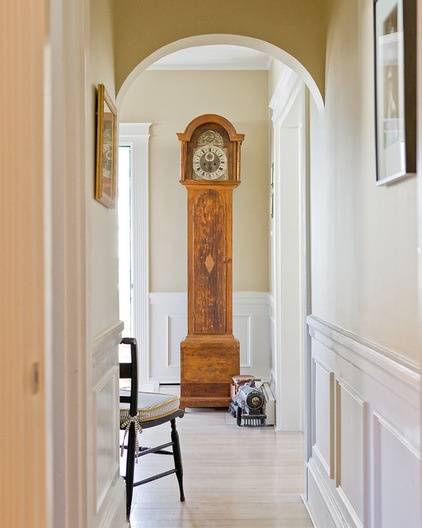
Due to their large size, grandfather clocks are typically found on the ground floor of a house. Considered prized showpieces, they’ve traditionally been displayed in the public areas of the house, such as a foyer, living room or study.
Entry halls and foyers. Foyers often have wasted space. A grandfather clock makes a good addition in a foyer space where seating or a small entry table won’t work. Another benefit to locating it here is, depending on the home’s configuration, the chiming can resonate through the house more than if the clock is inside a closed room.
The clock shown here is an antique Aaron Miller clock from 1750 that has been in the homeowner’s family as long as they can remember. It sits in the front hall of a Boston home so anyone who comes in the front door is sure to see it. “We positioned it so one can also see it from the end of a long hall that joins this room to the kitchen,” says designer Christine Tuttle.
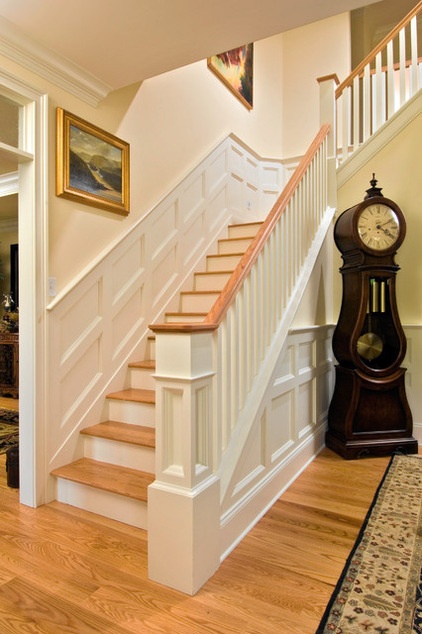
This example, the Arendl model by Howard Miller, looks terrific nestled in the nook of this staircase where a table and chairs might not fit.
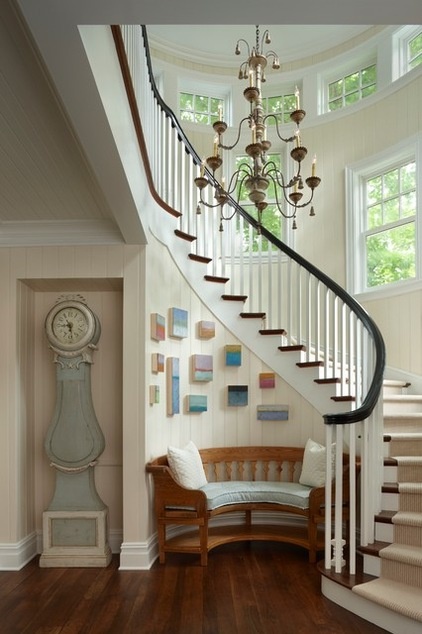
Consider a niche. If you have a tight entryway and don’t have a lot of passage space, you could consider placing a grandfather clock inside a niche. Of course, you’ll need to determine whether the construction of your wall will accommodate it.
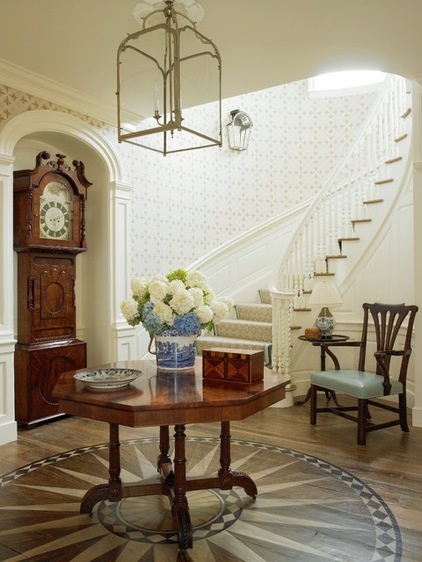
Another option is to utilize a superfluous doorway. The jamb thickness would have to be deep enough to accommodate the depth of the clock after closing the doorway opening. The decorative detailing on this example frames this clock beautifully.
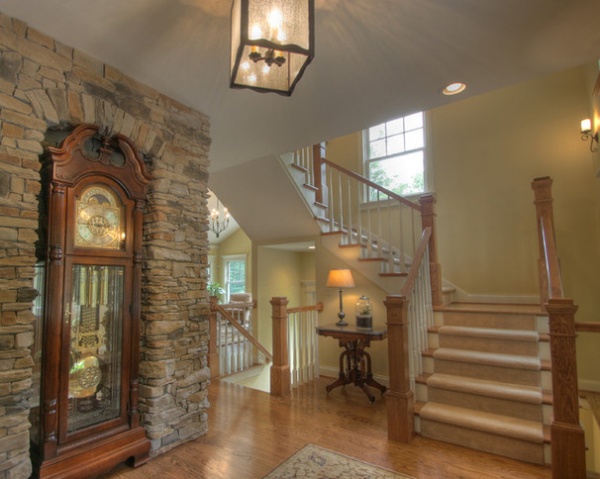
One thing to keep in mind if you inset your clock is that you’ll need to access it for maintenance. Some clocks are made with access panels on the sides, which would make it difficult, if not impossible to service. So be sure to check the particulars of your clock before proceeding.
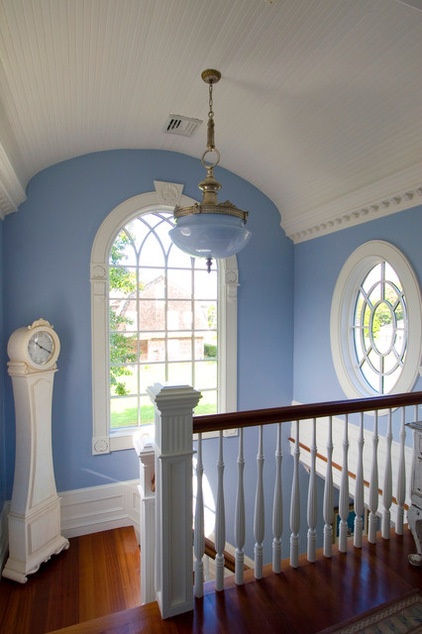
Awkward spaces. Grandfather clocks are perfect for filling those awkward spaces where nothing else will work. Staircase landings, for example, are an ideal clock perch.
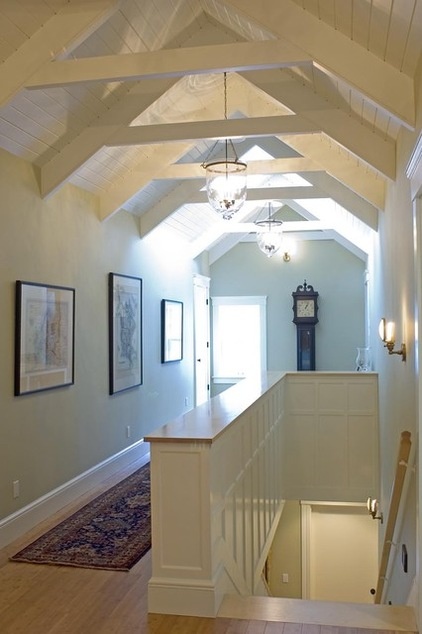
The end of a long hallway is another great place to park your grandfather clock. The angled ceiling of this Portland home begs for something vertical at the far end. The grandfather clock balances out the space.
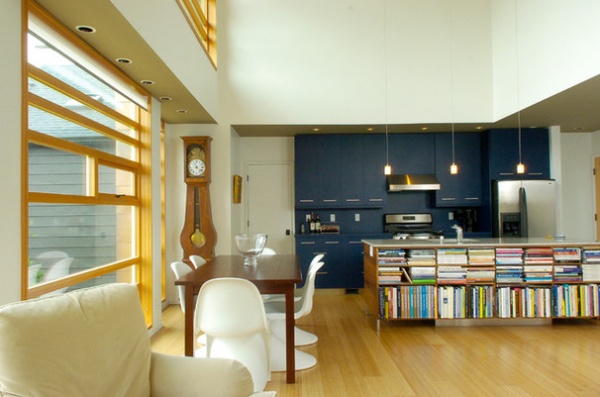
Dining areas. If you choose to include a grandfather clock in your dining space, make sure it’s not placed too close to the cooking area if your kitchen doesn’t have good ventilation. Heat and moisture can cause damage to the clock.
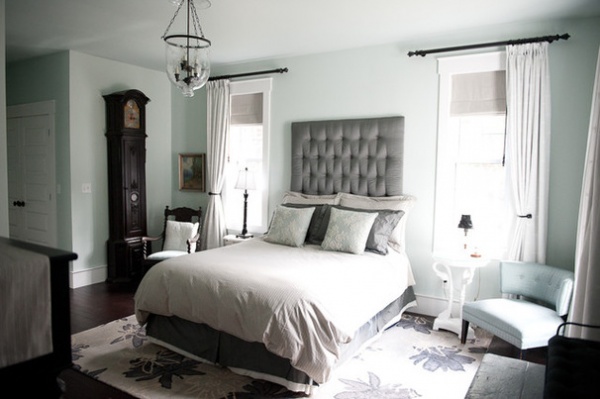
Master bedroom. Like black licorice, a grandfather clock in the bedroom is something you’ll either love or hate. Many clocks can have a strike-no strike lever or a silencer put in to prevent it from striking, or chiming. However, it’s prudent to check with the manufacturer or a clock technician before deciding to put it in your bedroom. Most people would have a hard time sleeping through a rendition of “Westminster Quarters.”
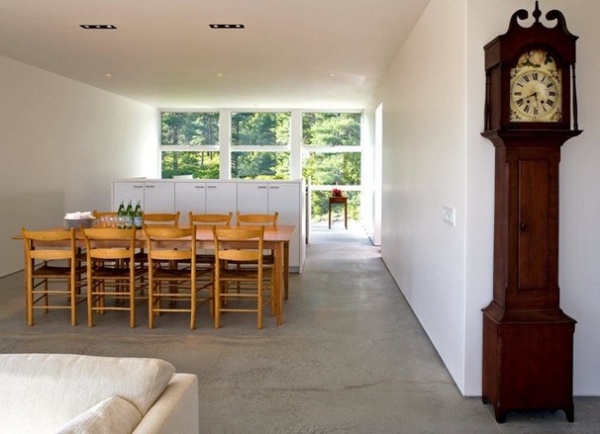
Modern settings. A great majority of grandfather clocks are quite traditional, but that doesn’t mean they have to be paired with a similarly formal interior. This project by Peacock Builders beautifully marries an antique grandfather clock with poured concrete floors and a spare interior.
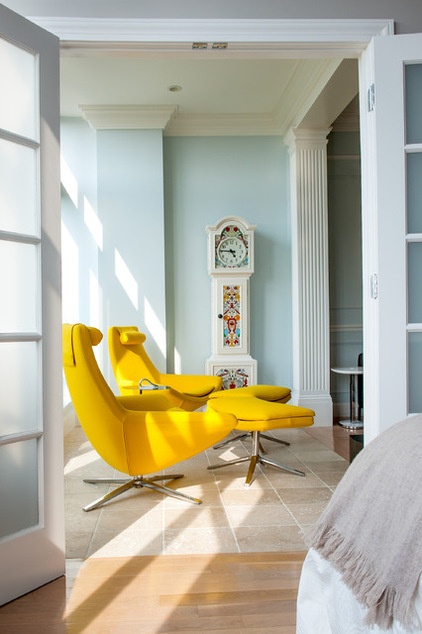
New vs. Old
As with furniture, there are pros and cons of antique versus new. A new clock will come with a warranty and probably will be easily serviceable and have available replacement parts.
Antique clocks, on the other hand, have their own charm. However, may need to be serviced by antique clock repairmen, a specialized field. It could be hard to find one nearby if you live in a more rural area.
The cheery number shown here is a new clock, called the Aldeutsche by Dutch firm Moooi.
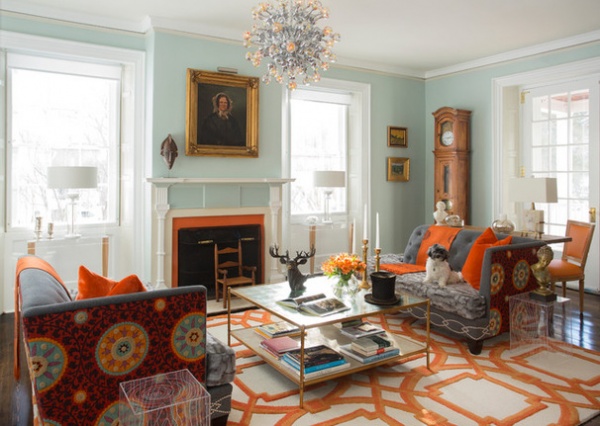
Maintenance
Exterior. In terms of dusting, treat the cabinet of a grandfather clock as you would another piece of fine furniture. However, to clean the glass, spray glass cleaner on a towel rather than directly on the glass, as overspray will damage the cabinet finish.
Winding. Each clock will have its own winding requirements, and there are many variations. Most will need to be wound once a week. Battery-powered clocks won’t need winding. If you go out of town frequently, or don’t think you’re up to keeping to a winding schedule, you might want to consider a newer clock that’s battery-powered.
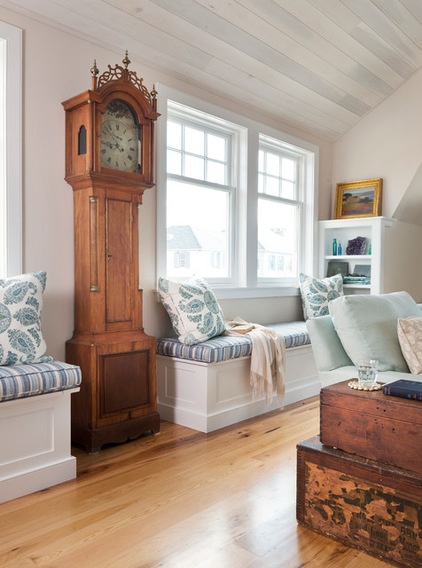
Oiling. A clock will need to be oiled about every two years or so. If it’s skipped, the oil will dry out and get gummy, attracting debris and causing wear in the parts. Eventually the gears will be ruined. You can oil the clock yourself if you have the specific directions for your clock. Clock repairmen usually offer this service as well. However, Ingberman notes that some new clock manufacturers void warranties if work is done by anyone but a technician, so it’s best to check.
Ultrasonic overhaul. An overhaul is a deep clean for the interior parts, which must be done by a qualified professional. Ingberman says the technician removes the movement from the clock case, then “bathes” it in a machine filled with a de-greasing chemical, where bubbles “scrub” all the metal pieces clean. Afterward, fresh oil is applied.
Overhauling is recommended about every 10 to 12 years if the clock has been oiled about every two years. Otherwise, every five to seven years is suggested.
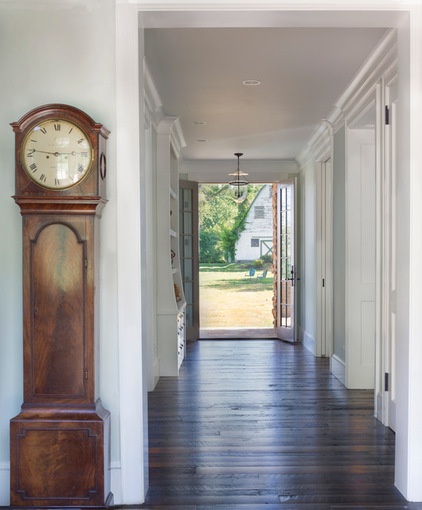
Story Behind the Name
The grandfather moniker was adopted in 1875 after a popular song written by Henry Clay Work called “My Grandfather’s Clock.” The story stems from the George Hotel in Yorkshire, England, owned by two brothers back in the day. The hotel housed a beautiful longcase clock that kept perfect time. After the first brother passed away, the clock began losing time. Upon the second brother’s death, the clock mysteriously stopped running altogether.
Work’s beloved song title forever changed the clock’s name from the longcase clock to something decidedly more cozy.
More: See more ideas for decorating with grandfather clocks in the Photos
Browse grandfather clocks in the Houzz Shop
Related Articles Recommended












